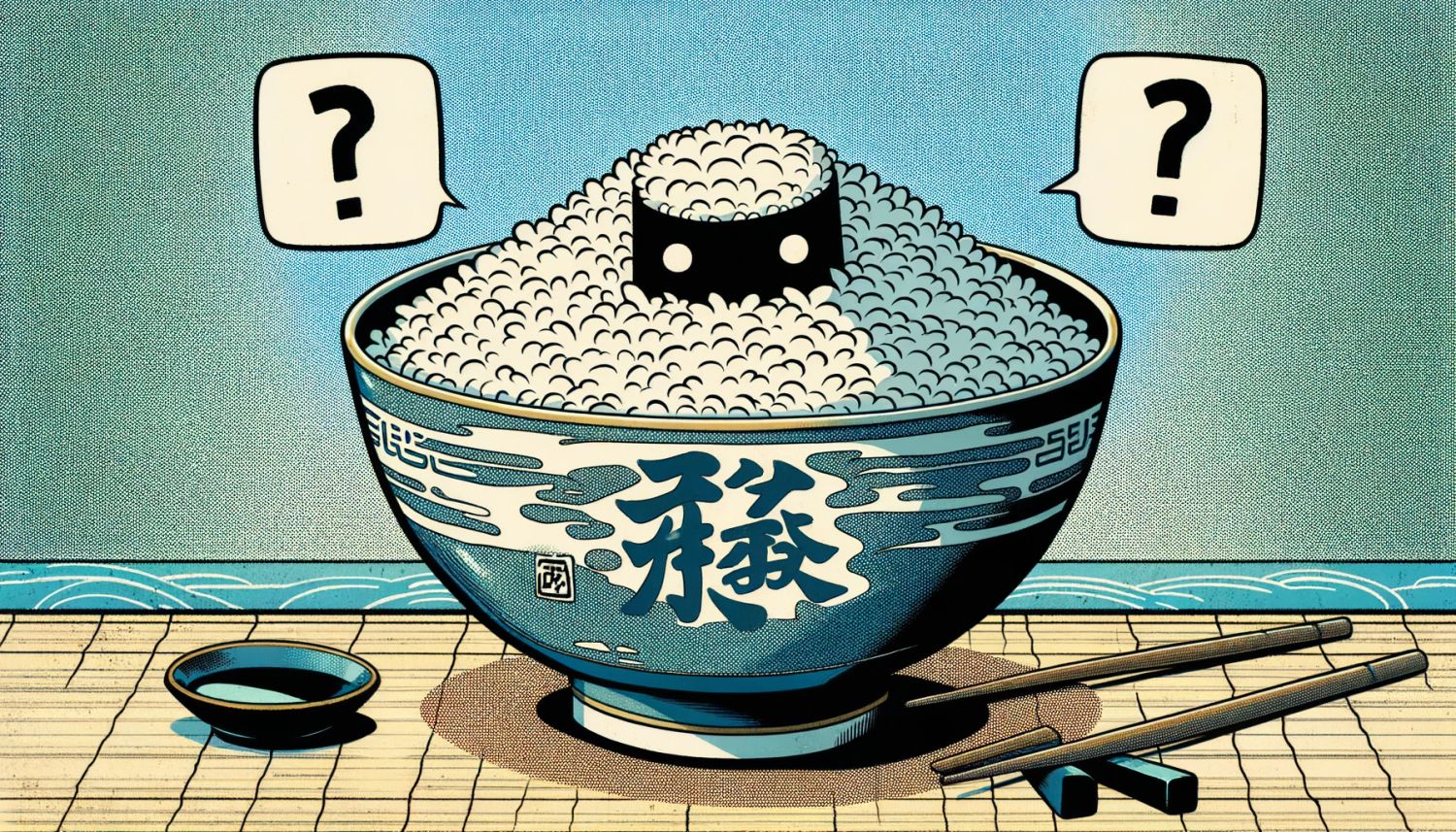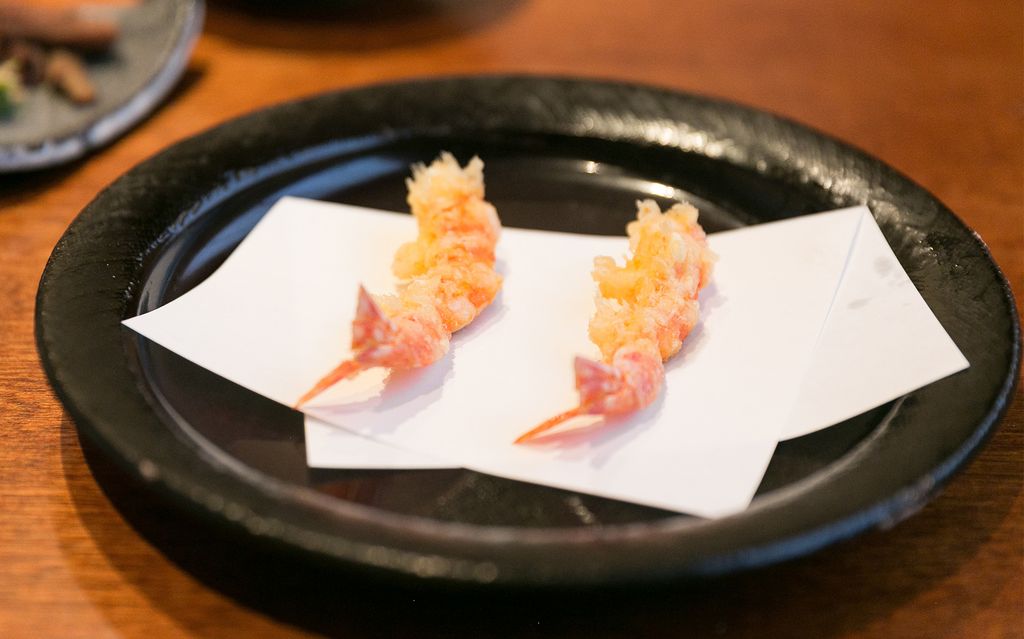Ebi Tempura Sushi
A Comprehensive Overview of Deep-fried Shrimp or Prawn in Japanese Sushi Cuisine
エビテンプラすし 
What is Ebi Tempura?

City Foodsters. Ebi, Mikawa Zezankyo, Tokyo, JPN. flickr.com. Some rights reserved: CC BY 2.0 DEED. Changes applied: crop
Ebi tempura えびの天ぷら is the fried preparation variant of ebi in Japanese cuisine. It is a fried shrimp, served warm and crispy, golden on the outside, juicy and tasty on the inside, either alone or with rice. However, the aromas of the dough baked in sesame oil only harmonize well with soured sushi rice to a limited extent. The preparation of hand-pressed nigiri sushi is a more western way of preparation than it is found in Japan. Ebi tempura nigiri sushi can occasionally be found in Japanese conveyor belt sushi restaurants. In upscale restaurants, ebi tempura is regarded with disfavor as sushi. However, when served as a standalone dish, it is a popular and well-received option.
Ebi Tempura for Sushi or Sashimi
Tempura is a very popular method of preparing various dishes in Japan. During the Edo period (1603-1868), tempura dishes were considered to be the food of the common people, the dishes were mostly bought and eaten at a food stall (yatai 屋台). As a result, most recipes today speak of tempura in Edo style (edomae 江戸前). During the Meiji era (1868-1912), driven by a growing middle class, the spread of tempura specialty restaurants as we know them today began. The term tempura, probably originated from the Portuguese cuisine, adopted in the 16th century from Jesuits of Portugal missionizing in Japan.
Ebi tempura is prepared by first powdering prawn or shrimp with flour and soaking it in a liquid dough. The dough is then fried with hot oil (320-350 °F or 160°-175° C). Especially when prepared as nigiri sushi, the usual garnish of grated radish (daikon'oroshi 大根おろし) or coarse salt is not recommended. A preferred alternative is to brush the cooked ebi tempura with a refined soy or seasoning sauce (tentsuyu 天つゆ). Nowadays, ebi tempura is also very popular as rolled sushi. Especially in the Western-Japanese fusion cuisine, a currently very popular style outside Japan, ebi tempura is widely used, combined in countless variations and is part of many modern inside-out sushi creations.
For ebi tempura, smaller Japanese tiger prawns (saimaki ebi 才巻き海老) with a length of up to 10 cm are preferred. Especially outside Japan or in “cheaper” restaurants, young tiger prawns (ushi ebi ウシエビ) or pacific white shrimps (banamei ebi バナメイエビ) are regularly used as substitutes.
Video about Ebi Tempura Sushi
External video embedded from: youTube.com. Credit プロが教える家庭料理 papa′s cooking. 感謝150万再生超え!【プロの海老天ぷらは何故?真っ直ぐなのか?】とても分かりやすく丁寧に紹介しています。是非ご覧ください!How to make shrimp tempura!.
Sources and Further Reading
- Donald Richie. A taste of Japan: customs and etiquette, food fact and fable, what the people eat. 1985
- Ishige Naomichi. The History and Culture of Japanese Food. Kegan Paul Limited. 2001
- Kondō Fumio (近藤文夫). The owner of Tempura Kondo gently teaches the basics of tempura (「てんぷら近藤」主人のやさしく教える天ぷらのきほん). Sekai Bunka, Tokyo (世界文化社, 東京都). 2017
- Richard Hosking. A Dictionary of Japanese Food: Ingredients & Culture. Tuttle Publishing, North Clarendon. 2015
- Tadashi Ono, Harris Salat. Japanese Soul Cooking: Ramen, Tonkatsu, Tempura, and More from the Streets and Kitchens of Tokyo and Beyond. Ten Speed Press, Danvers. 2013
- 近藤文夫. 『てんぷら近藤」の技と味、 柴田書店 (The skill and taste of "Tempura Kondo", Shibata Shoten)』. Shibata Bookstore, Tokyo (柴田書店、東京都). 2013
- IUCN Red List of Threatened Species. Version 2023-1
Image Credits
- City Foodsters. Ebi, Mikawa Zezankyo, Tokyo, JPN. flickr.com. Some rights reserved: CC BY 2.0 DEED. Changes applied: crop
- SushiPedia. All rights reserved ©